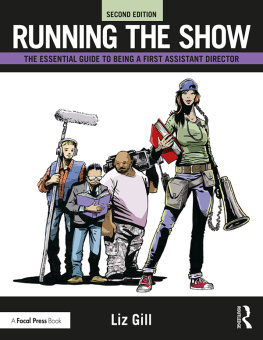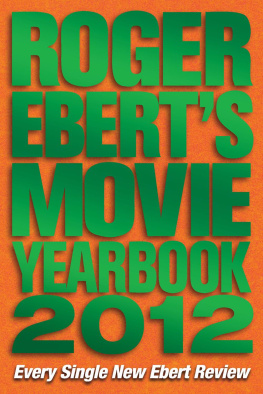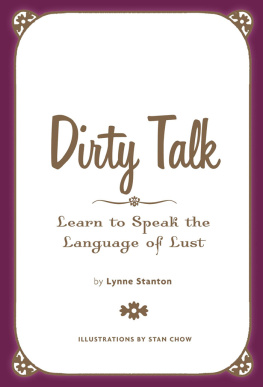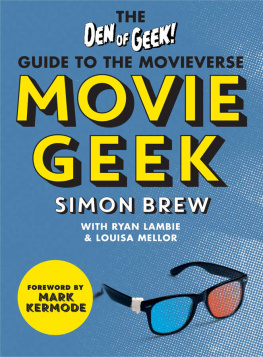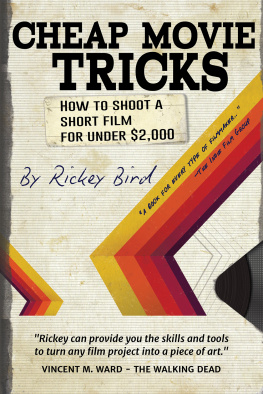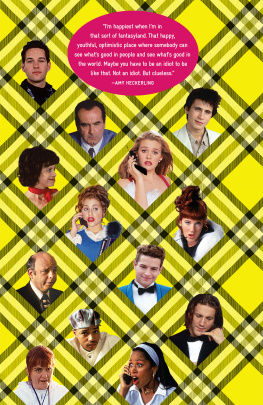Movie Speak
How to Talk Like You Belong on a Film Set
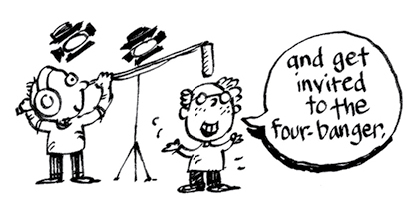
By Tony Bill
Workman Publishing, New York
Copyright 2008 by Tony Bill
Illustrations copyright 2008 by Katie Maratta and Peter Maratta
All rights reserved. No portion of this book may be reproducedmechanically, electronically, or by any other means, including photocopyingwithout written permission of the publisher. Published simultaneously in Canada by Thomas Allen & Son Limited.
Library of Congress Cataloging-in-Publication Data is available. eISBN 978-0-7611-5630-7
Workman books are available at special discounts when purchased in bulk for premiums and sales promotions as well as for fund-raising or educational use. Special editions or book excerpts also can be created to specification. For details, contact the Special Sales Director at the address below.
Cover design by David Matt
Design by David Matt and Gary Montalvo
Illustrations by Katie Maratta and Peter Maratta
WORKMAN PUBLISHING COMPANY, INC.
225 Varick Street
New York, NY 10014-4381
www.workman.com
CONTENTS
Glossary
Essays
Introduction
Lights! Camera! Diction!
A little over a hundred years ago, in 1895, a couple of guys who spoke only French invented the movies. Two brothers named Louis and Auguste Lumire forever changed the way pictures were looked at. It happened in a small, dark basement in Paris, where some thirty-five people had been attracted by a sign on the street that read Lumire Cinematographe. No one in the room had any idea of what was about to take place. When the lights went down and the screen started to flicker, the people were astounded. Theyd never seen anything like it.
A dozen years later, in 1907, a film crew stepped off a train in downtown Los Angeles. These invaders consisted of Francis Boggs, the director, and Thomas Persons, who was the cameraman, propman, business manager, assistant director, and whatever else was required. They had already shot the interiors of their film in Chicago. Now, despite the minor technicality of an entire change of cast, they were to film the rest of it in California. A year later, they finished ita full reel, all one thousand feet of it: The Count of Monte Cristo. It was the first big California feature, and following its debut, Boggs and Persons set up a studio on a rooftop on Main Street in downtown Los Angeles.
History does not record the way Louis and Auguste or Francis and Thomas spoke on their first sets, but soon they began to invent, discover, or stumble across a way to express themselves on a film set that no one else had imagined.
Movie sets are another country with a language all their own, much of it rich in history, much of it fading or forgotten. There are virtually no written records of the etymology of many of these words and expressions. Its a largely oral tradition passed down over the last hundred years. Old-timers and experts, crew members and scholars, all depend on an unwritten record from whence many of these terms derive. But the language prevails. Just as with the nautical or aeronautical lexicon, its the only accepted way of communicating. So this is a book about that and other aspects of the movie life. As much as possible, I include not just what I know about making movies, but also what everybody else knows about making movies; what everybody knows but wont quite admit; what everybody knows but didnt know they knew. An insiders book for outsiders.
To be sure, there is an endless supply of nomenclature, slang, and colorful expressions on a movie set. Many words are technical, some are odd but self-explanatory, and many have become familiar enough to the general public to need no definition. Ive tried here to present the most colorful, mysterious, and useful of the bunch: the ones that can get you through any day with plenty left over for the next.
It seems that everyone these days wants to make movies. Whether it be as a writer, actor, director, producer, cinematographer, or other crewmember, they all yearn to join this not-so-secret society; to learn its ways, its coded rules, and its language. The only trouble is, you have to be a member before you can learnand you have to learn before you can be a member. If you walk onto a set, you have to talk the talk. You cant (or shouldnt) direct a movie and tell the crew to Move that little thingamajig a little bit that way, and shoot kind of a close shot of the actor from about waist up so I can see him when the extra walks by, and move the camera a little bit that way.
Instead, youd say something like, Give me two Ts or a cowboy with the Jack Lord and make sure the B.G. is visible as you pan. And maybe well make that a one-er, so just banana left.
Confused? I hope you wont be for long.

To my wife,
Helen Bartlett,
who produces fine movies, beautiful daughters...
and all the best years of my life.
And to Francesca,
Maddie, and Daphne.
A
Abby Singer, The Normally referred to simply as the Abby, this is always the second-to-last shot of the day. Named for the eponymous production manager/ producer who, as an assistant director (A.D.) in the early days of television, realized that a few extra shots could be squeezed out of the days schedule if the crew began packing up and moving to the next location before a location move took place. Over the course of a day, this could save up to an hour of shooting time. This penchant for hustle and efficiency earned Singer a place in crews hearts and films history, and coined the phrase now heardround the world and understood in many languages.
The eagerly anticipated announcement of the Abby is always accompanied by at least mild rejoicing among the crew. It is best first revealed sotto voce by the director to the A.D., whose privilege it should be to announce it.
One caveat: A director can avoid embarrassment by making absolutely sure that the penultimate shot is indeed at hand before he confirms the Abby Singer, for if he reneges more than once or twice during a given production, it will be cause for behind-the-back mockery, if not open distrust. It is tantamount to lying to children or taking away their candy.
above-the-line items
Elements of the budget that normally include only the salaries of the star(s), director, producer, writer, and underlying literary rights. The rest of the budget itemscrew, locations, music, film, editing, etc., are below-the-line items. The line is the line on the page of the budget that separates the two categories. Above-and below-the-line personnel are also often referred to as a group, sort of like the way people talk about the rich folks and the poor folks.
Above-the-line

action! The universal directors command, though some opt for a customized signal such as Okay, Go, or a simple nod of the head. (Samuel Fuller carried a Luger that he would fire sometimes in lieu of yelling Action! Martin Scorsese often says, Action. Energy! And Clint Eastwood just sayssoftly, of courseGo ahead or, perhaps as a nod to his Sergio Leone roots, Actione


